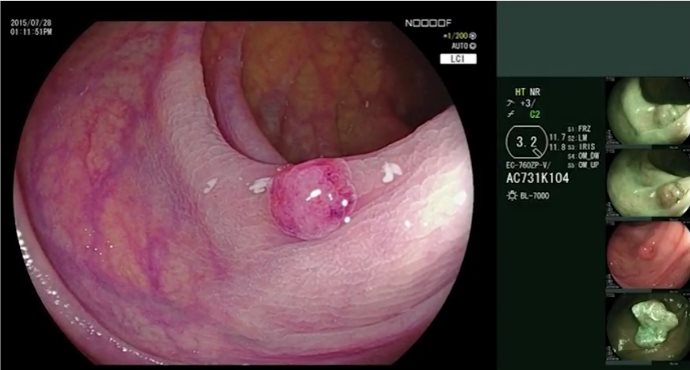Calculating Effect of Surveillance Colonoscopy on Colon Cancer Prevention
Douglas K. Rex, MD, FASGE, reviewing Pinsky PF, Schoen RE. Clin Gastroenterol Hepatol 2020 Feb 1.
Large nonrandomized studies have estimated that cancer incidence after removal of 1 or 2 nonadvanced adenomas is similar to that of patients with no adenomas. However, during the surveillance interval, patients with 1 or 2 small adenomas are subjected to more surveillance colonoscopy than the no-adenoma group, which might lower their incidence of colon cancer. Since the trials were nonrandomized, the impact of surveillance is difficult to estimate. One such trial is the Prostate, Lung, Colorectal, and Ovarian (PLCO) Cancer Screening Trial conducted in the U.S.
In a recent highly publicized report from the PLCO trial, the risk of cancer in the group with 1 or 2 nonadvanced adenomas was estimated at 1.2 compared to the no-adenoma group, and was not significantly different. Both groups received significant numbers of colonoscopies during follow-up, but the rate was higher in the group with 1 or 2 nonadvanced adenomas.
In this study, investigators from the PLCO trial used a metric called DTA (adenoma dwell time avoided), which is the number of years of adenoma dwell time that must be eliminated by polypectomy to prevent a cancer. In the current study, this was estimated at 612 years, and in an analysis of flexible sigmoidoscopy studies, it was estimated at 500 years.
Bottom line, the analysis found that about 30% of prevented cancers resulted from the removal of adenomas during surveillance colonoscopy rather than the baseline colonoscopy. Adjustment for this consideration would raise the actual estimated increased risk of cancer during surveillance in the group with 1 or 2 adenomas from 1.2 (as estimated in the study) to 1.4.
COMMENT
The U.S. Multi-Society Task Force on Colorectal Cancer recently presented new postpolypectomy surveillance recommendations. Perhaps the most impactful new recommendation is that patients with 1 or 2 nonadvanced adenomas should undergo surveillance colonoscopy at 7 to 10 years. Although there was momentum to change the interval to 10 years, awareness that the small-adenoma arm in recent observational studies was commonly subjected to more surveillance colonoscopy than the no-adenoma group led to the more cautionary recommendation of 7 to 10 years for this low-risk group. In light of this new evidence from the PLCO trial, which was one of the important studies considered in developing the new recommendations, changing the low-risk recommendation from 5 to 10 years to 7 to 10 years (rather than to 10 years) seems appropriate.
Note to readers: At the time we reviewed this paper, its publisher noted that it was not in final form and that subsequent changes might be made.

Douglas K. Rex, MD, FASGE
CITATION(S)
Pinsky PF, Schoen RE. Contribution of surveillance colonoscopy to colorectal cancer prevention. Clin Gastroenterol Hepatol 2020 Feb 1. (Epub ahead of print) (https://doi.org/10.1016/j.cgh.2020.01.037)


